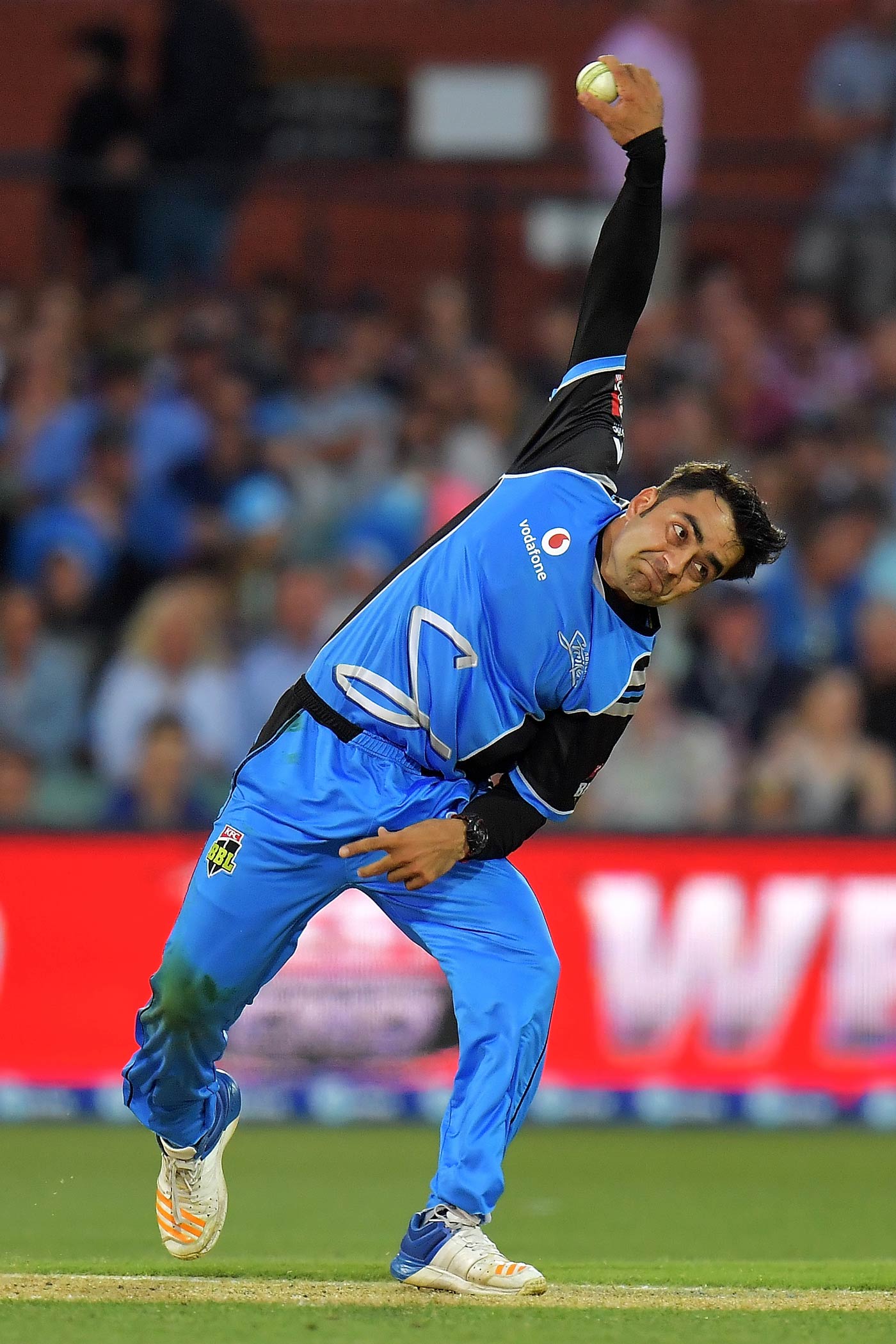Rashid Khan
Tim Wigmore

Rashid Khan's most potent delivery is a sharp-turning googly, disguised as well as a poker player concealing a royal flush © Getty Images
When the first professional game of Twenty20 took place in 2003, Rashid Khan was a four-year-old in Afghanistan. His ascent speaks of the extraordinary changes brought about by the format. In short, he embodies the democratisation of cricket. It has always been besotted with hierarchies - from the Gentlemen against the Players to the distinction between Full and Associate Members of the ICC. Yet the T20 ecosystem revolves around domestic leagues, so it doesn't care where cricketers are from - only their quality.
Rashid also reflects the importance of his trade in the 20-over game. During T20's first forays, it was blithely assumed that, with short boundaries, and batsmen on the attack, leg-spinners would become as defunct as cassettes. Instead, they have proved more sought-after than any other type of bowler. And those who are thriving are not purveyors of dour, wicket-to-wicket, risk-free fare. They are the ones with the best variations, able to prevent batsmen lining them up.
Most of all, there is Rashid's skill. He is both shaped by leg-spin's traditions - as a boy, he looked up to Mushtaq Ahmed and Anil Kumble - and in sync with its new age. He has many traits of the classical leggie. He can beat batsmen in the air and off the pitch. And while he has a fine stock ball, his most potent delivery is a sharp-turning googly, disguised as well as a poker player concealing a royal flush. As with Pakistan's Shadab Khan and West Indies' Samuel Badree, Rashid bowls quickly for one of his kind, regularly passing 60mph, which means batsmen are reluctant to use their feet.
He is brilliantly flexible - equally at home in the powerplay, the middle overs or at the death - and adroit in shielding a short boundary. He is also shrewd, relying not just on his natural talent, but on footage and data analysis. Rashid is imbued with a chutzpah that enables him to thrive in new environments. Last year, he made the transition from Associate into a $600,000 bowler in the IPL. He performed marvellously in India, then excelled in leagues in the Caribbean - where he took a hat-trick exclusively with those googlies - Bangladesh and Australia. The analysts demystified him, but they could not stop him bamboozling opponents.
T20 bowlers tend to divide into those who seek to contain and those who pursue wickets. In 2017, Rashid was a world leader in both. He took 80 wickets in the format at 14 apiece, with an economy-rate of just 5.53. The next best, Sunil Narine, managed 62; only Dwayne Bravo - 87 in 2016 - had taken more in a calendar year. And Rashid is still a teenager. He is shaping up as the Muttiah Muralitharan of T20, setting records that may never be surpassed. As a young Afghan leg-spinner who has become the most coveted bowler in the format, Rashid encapsulates T20's new possibilities. More than anyone, he is a beneficiary of the new landscape - and a harbinger of its future.

